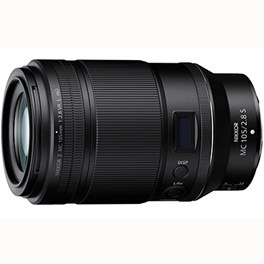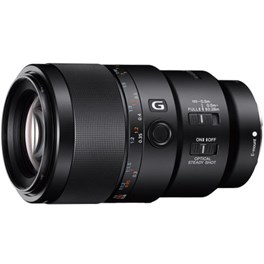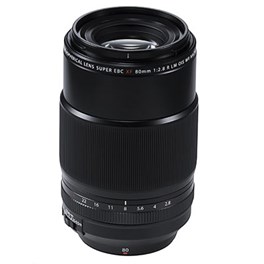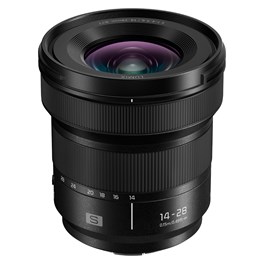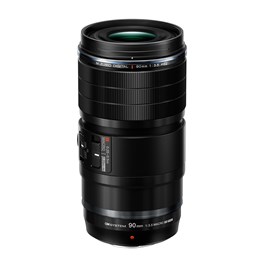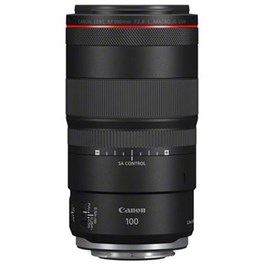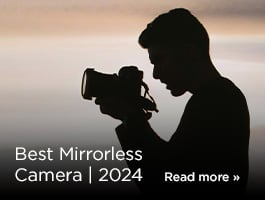
Having the best lens for macro photography is hugely important – arguably more so than the camera. A good macro lens needs to fulfil a number of key criteria, and when putting together this guide and making our picks, we’ve made sure to keep these in mind.
We’ve aimed to keep this list as affordable as possible. While specialised macro lenses can be costly due to their complex optics, this guide features a range of options under £1,000, along with a few that go beyond that mark. And, if you are yet to pick a camera, you can look at our guide to the best cameras for macro photography. You can also visit our tips and tricks for macro photography by award-winning photographer Ellie Rothnie.
And with that, let’s get on with the show and count off what we consider some of the best macro lenses on the market…
|
Focal Length: 105mm Maximum Aperture: f2.8 Magnification: 1:1 Minimum Focus Distance: 29.5 cm Image Stabilisation: No |
Pros:
Cons:
|
A deservedly famous lens among macro aficionados, this third-party telephoto prime is available for L-mount as well as Sony E-mount. Delivering outstanding performance at an impressively reasonable asking price, the Sigma 105mm f2.8 Macro DG DN Art Lens merits serious consideration by any Sony photographer looking to shoot close-ups. Its focusing system, powered by a Hyper Sonic Motor, is fast and effective, and you can make use of the handy Focus Limiter switch to restrict it to a specific area.
There’s no stabilisation – though in fairness, most full-frame Sony cameras have their own. If you’re using one that doesn’t, like an early Alpha 7 camera for example, the Sony FE 90mm is possibly a better choice, but otherwise this Sigma lens has a lot of reasons to be the first port of call on your list.
|
Focal Length: 90mm |
Pros:
Cons:
|
This macro lens from Tamron has been a hit among Sony and Nikon mirrorless users. With its VXD linear motor, it nails focus quickly and precisely – something that’s not always guaranteed in macro lenses. The optical quality is outstanding, offering crisp detail from centre to edge, with beautiful falloff and bokeh. It’s also surprisingly compact, which makes handheld shooting more comfortable. While it lacks stabilisation, pairing it with a stabilised Sony or Nikon body solves that. For under £700, it’s hard to beat.
|
Focal Length: 105mm Maximum Aperture: f2.8 Magnification: 1:1 (life-size reproduction) Minimum Focus Distance: 29 cm Image Stabilisation: Up to 4.5 stops with built-in Vibration Reduction (VR) |
Pros:
Cons:
|
This sublime piece is one of Nikon’s ‘S’ lenses – this is the firm’s designation for its top-quality mirrorless lenses, fulfilling a similar function that ‘G Master’ does for Sony or ‘L’ does for Canon. The Nikon Z MC 105mm f2.8 VR S is a superb telephoto that ticks basically all the boxes a macro photographer is likely to care about. The focusing is smooth and fast, the magnification is life-size at 1:1, the stabilisation provides up to four stops of effective compensation – oh, yes, and the image quality is absolutely superb, with crisp details and punchy colours. We’d expect nothing less.
This lens isn’t too heavy for a full-frame telephoto, tipping the scales at 630g. Some who were fans of the old Nikon DSLR equivalent might bemoan the decision to move from a metal body to a plastic one. It doesn’t feel quite as robust, but it does help the lens stay light on its feet (so to speak), which is handy for prolonged handheld shooting.
|
Focal Length: 90mm Maximum Aperture: f2.8 Magnification: 1:1 Minimum Focus Distance: 28 cm Image Stabilisation: Optical SteadyShot (OSS) |
Pros:
Cons:
|
This macro lens from Sony was the first full-frame E-mount lens to feature built-in image stabilisation, making hand-held macro images much more achievable than they were previously. And what a lens this is – it bears Sony’s ‘G’ designation, which means it’s been optimised to produce exceptional bokeh in the defocused areas of images. Edges are rendered beautifully smoothly, and the nine-bladed aperture ensures an aesthetically pleasing falloff.
Sharpness is top-tier, with aberration and distortion controlled very well to produce crisp and punchy macro images. The autofocus, powered by Direct Drive SSM, is quick and effective, and this combined with the aforementioned stabilisation means you stand an improved chance of capturing sharp images of flighty subjects like insects. With a body design that’s resistant to dust and moisture, this is a lens that’s great for exploring the outdoors with.
Really, there’s very little we can say to criticise this lens – it’s sharper at f4 than f2.8, but that’s entirely expected, and the wide open results it gets are more than acceptable. For full-frame macro photography on Sony, this lens should be your first port of call.
|
Focal Length: 80mm (122mm equivalent on full-frame) Maximum Aperture: f2.8 Magnification: 1:1 (life-size reproduction) Minimum Focus Distance: 25 cm Image Stabilisation: Up to 5 stops (OIS) |
Pros:
Cons:
|
The luminous beauty is still the macro lens for Fujifilm X photographers. It came out a few years before Fujifilm started putting 40MP sensors into its cameras, but fortunately the XF 80mm f2.8 LM OIS WR Macro has the level of sharpness necessary to cope with that kind of detail. It produces images of delectable detail, controlling for aberration, distortion and vignetting to the point where they’re essentially a non-issue.
Fujifilm’s highly effective optical stabilisation is on board here for hand-held shooting, and the bokeh produced at shallow depths of field is simply gorgeous thanks to the nine-bladed aperture (as is often the case with Fuji lenses). It’s a relatively heavy beast at 750g, and the price puts it at the premium end of the scale – but it’s unquestionably a worthwhile investment for the committed macro shooter.
|
Focal Length: 14–28mm Maximum Aperture: f4–5.6 Magnification: 0.5x (half life-size) Minimum Focus Distance: 15 cm Weather Sealing: Dust-, splash-, and freeze-resistant (operational down to -10°C) |
Pros:
Cons:
|
Hang on a tick, you might be saying. We’ve been pretty much exclusively recommending telephoto primes up to this point, and suddenly a wide-angle zoom has muscled its way onto the list. What gives? Yes, the Panasonic LUMIX S 14-28mm f4-5.6 Macro is something of an unusual beast, and if you want something more conventional for L-mount, you can check out the L-mount version of the Sigma 105mm f2.8 Macro DG DN Art Lens featured in the Sony section of the round-up. However, for creating close-up images with an altogether different look, the LUMIX S 14-28mm f4-5.6 Macro lens is well worth considering.
It’s got a close focusing distance of 15cm that’s constant throughout the zoom range, and when you zoom in fully to 28mm you get a pretty respectable reproduction ratio of 0.5x. The image quality is gorgeous, with excellent management of distortion and aberration, and even with a comparatively narrow maximum aperture of f5.6 down the tele end, it’s still more than possible to produce images with delightfully smooth bokeh.
|
Focal Length: 90mm (equivalent to 180mm in 35mm format) Maximum Aperture: f3.5 Magnification: 2:1 (greater-than-life-size reproduction) Minimum Focus Distance: 22.4 cm Image Stabilisation: Up to 7 stops with compatible bodies |
Pros:
Cons:
|
As this is a more recent OM System lens, it comes with the same level of weather-sealing as the OM cameras, so you should have no fear taking it out for a day’s shoot in the wild and the wet. The OM SYSTEM M.Zuiko Digital ED 90mm f3.5 Macro IS PRO delivers an equivalent focal length of 180mm, which is quite long even for a macro, and will mean tight compositions are a must.
The good news is the impressive 2:1 magnification ratio, doubling the size of your subject on the sensor for super-detailed close-ups. You could even extend that magnification with teleconverters if so desired – the lens supports them. OM System’s effective seven-stop stabilisation is also on board, helping to control camera-shake while working at such a long focal length. Physically, this lens is quite large and long, especially for relatively small MFT cameras, but the quality and ease of use it delivers are beyond reproach.
|
Focal Length: 100mm Maximum Aperture: f2.8 Magnification: 1.4x (greater-than-life-size reproduction) Minimum Focus Distance: 26 cm Image Stabilisation: Up to 5 stops (8 stops when combined with in-body stabilisation) |
Pros:
Cons:
|
A much-desired update to a classic of the genre, the Canon RF 100mm f2.8 L Macro IS USM is the successor to the legendary Canon EF 100mm f2.8 L Macro. However, this isn’t just a hasty reskinning of an old lens with a new mount – Canon has come out with something altogether different. This makes sense when you consider that EOS R users can simply adapt the old EF version to their newer cameras.
The RF 100mm offers outstanding close-up capabilities, with a maximum magnification of 1.4x allowing for the capture of tremendous levels of detail. The optical stabilisation is hugely effective; when paired with a compatible EOS R body, it can achieve up to eight stops of compensation. The other exciting addition is the SA (Spherical Aberration) control dial, which allows you to alter the shape and quality of bokeh to create a soft focus effect. It adds another creative string to the photographer’s bow, and makes this lens an essential purchase for the serious macro shooter working on RF-mount.

How to choose the best macro lens
As far as our technical team is concerned, the key characteristics of a macro lens are as follows:
1:1 magnification ratio (or better) - The magnification ratio refers to the relationship between the size of a subject and in real life and the size at which it is projected onto the sensor. At 1:1, or 1x, the subject is effectively rendered at life-size on the sensor plane. A macro lens is one that can focus in close enough to allow this, meaning that the tiniest subjects can be rendered in stunning detail. It’s not entirely essential (a 0.5x or 1:2 magnification ratio can still work) but it is very useful.
Telephoto focal length - Macro is often about filling the frame with a single subject, and as such, a tight telephoto focal length is hugely useful Macro lenses often tend to cluster around the 90-105mm mark – though as we’ll see, there is some variance in both directions.
Built-in stabilisation - It used to be a truism that macro shooters would always work on tripods. However, with optical stabilisation systems getting better and better, it has become much more possible to get sharp macro images while working handheld. As such, if a macro lens has effective optical stabilisation, it can make the user much more flexible in the types of subjects and images they can capture.
FAQs
What is a macro lens used for?
Macro lenses are designed for close-up photography. They allow you to capture the smallest details that you wouldn’t otherwise see with other lenses or even the naked eye. These lenses are often used to photograph insects, flowers and fine textures. However, some utilise the wide aperture and tight field of view for portraiture too.
How do macro lenses differ from regular lenses?
The closer minimum focusing distance of macro lenses allows you to capture subjects at a 1:1 ratio or higher. What does this mean? It means that the subject you capturing can be reproduced at life-size on the camera sensor, providing incredible detail not typically achievable with standard lenses.
Can I use a macro lens for non-macro photography?
By all means. Macro lenses are often used for portrait photography thanks to their tight field of field and increased control of depth of field.
What is the meaning of 1:1 magnification ratio in macro lenses?
A 1:1 magnification ratio means that the subject being photographed can be reproduced on the camera sensor at its actual size. Higher magnification ratios, such as 2:1 or 5:1, indicate the ability to capture subjects at larger-than-life sizes.
How does image stabilisation benefit macro photography?
Image stabilisation (IS) is important for macro photography as the impact of camera shake (caused by hand movements or other factors) is more pronounced at closer focusing distances. As a result, images come out sharper which is important when trying to highlight fine details.
Do I need additional lighting for macro photography?
Natural lighting is ideal but can be reproduced with artificial lighting. Furthermore, the use of ring flashes or flash guns can help evenly light your subjects, reduce shadows and help make the subject pop.
Can you use extension tubes instead of a macro lens?
While you can use extension tubes on a regular lens to turn it into a macro lens (distance between the lens and the camera sensor), the overall performance and final images will not be as clean or sharp as a dedicated macro lens.
How do we decide?
Our in-house photography experts, store staff and partners all work collaboratively to pour over our guides and tips articles. We also consider emerging trends and customer feedback to make sure our guides are always up-to-date and reflective of what people are truly looking for. By curating only the best products, our guides provide trustworthy recommendations, making it easier for customers to make informed choices with confidence.
If you would like more advice on any purchase our contact centre staff are here to help. Alternatively, you can reach us via email or social media. And don't forget. If you were to purchase anything based on our recommendations you'll be covered by our full returns policy
Sign up for our newsletter today!
- Subscribe for exclusive discounts and special offers
- Receive our monthly content roundups
- Get the latest news and know-how from our experts





